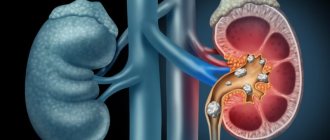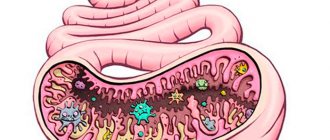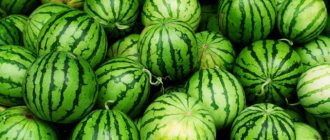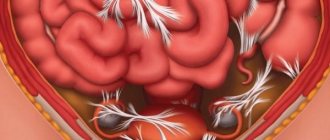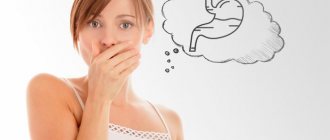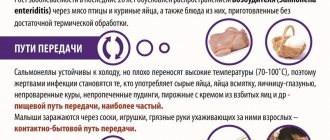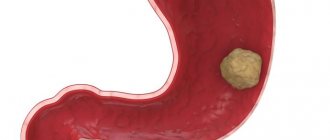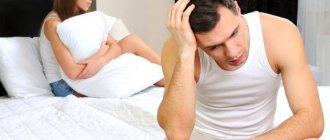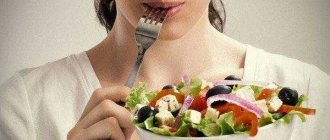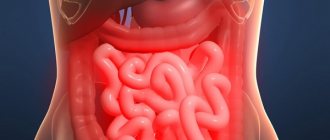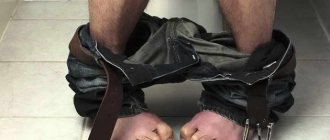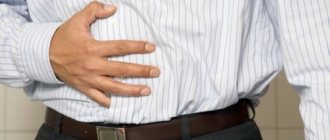Painful sensations in the left side at the level of the navel can be of a very different nature: aching, pulling, cutting, sharp. This does not always indicate diseases of the digestive system, since this is how myocardial infarction or muscle fiber strain can manifest themselves. Determining on your own what the cause is, much less taking any measures to eliminate them (drug therapy), is extremely dangerous. In most cases, such pain carries a certain risk to life, so if diagnosed, you should immediately consult a doctor. What diseases may indicate near-umbilical pain in the left side, what first aid consists of and in what cases it is appropriate, we will find out further.
Major diseases
If a person has pain in the left side, then in 95% of all cases this is the cause of diseases (acute and chronic) of the gastrointestinal tract and excretory system. Acute pain that gets worse with movement or breathing requires immediate medical attention. Let's look at just a few diseases that can cause pain in the left mesogastric region of the abdomen.
Stomach problems
The most common causes of pain in the left side are stomach diseases caused by poor diet, abuse of junk food and sugary carbonated drinks.
The gastric mucosa, whose function is to protect the internal organ from the negative effects of all products entering from the outside, is not able to fully function, which provokes the development of diseases such as:
Gastritis - occurs as a result of infection of the body by the bacterium Helicobacter pillory, which settles on the mucous membrane, irritating it and causing pain. Unpleasant sensations appear when food does not enter the stomach for a long time, as well as after a large intake of unhealthy (mainly fried and fatty) food. The pain is aching, the peak of which occurs during the digestion of food, after which its intensity decreases. The disease is caused by poor diet, as well as reduced immunity, which is unable to resist infection by Helicobacter pillory. Stomach ulcer – develops against the background of active gastritis, for which there is no treatment. Bacteria, increasing in number, occupy ever larger areas of the mucous membrane, which is corroded, resulting in the formation of bloody ulcerations. The damaged integrity of the mucous membrane causes pain, as well as blood in the stool (the stool turns a rich burgundy or black color). The pain is acute, spastic, intensifies after eating. With an exacerbation of the chronic stage of the ulcer, an increase in body temperature, as well as a complete lack of appetite, is possible. Gastroduodenitis is a disease in which infection by the bacterium Helicobacter pillory spreads to the upper part of the duodenum. The pain can be either acute or dull, but constant. The stomach hurts with sudden movements, palpation, and also 10-15 minutes after food enters the stomach. Stomach cancer - malignant neoplasms in or near the stomach, can be caused by frequent overeating, as well as eating too salty, spicy, hot and fried foods. It is characterized by an enlarged abdomen, acute pain when pressing on the epigastric region, as well as a general deterioration of the condition. Pylorospasm - there is a strong spasm of the stomach, in which the organ is not able to fully perform its functions. Natural blood flow is also disrupted, which can cause severe cramping pain on the left side in the navel area. Occurs due to disturbances in the functioning of the cardiovascular system, as well as with the development of cardiogenic shock.
Stomach diseases may not cause any symptomatic manifestations for a long time, indicating their existence only by the rare sharp occurrence of severe pain.
Pancreas problems
The most serious disease of the pancreas is pancreatitis. It is characterized by the presence of an inflammatory process, the cause of which may be the following:
long-term medication use; abuse of alcoholic beverages, which cause severe intoxication of the organ, disrupting its functioning; hormonal imbalances and metabolic disorders; frequent overeating, especially at night; the predominance of sweet carbonated drinks over pure mineral water; parasitic infestation; abdominal trauma.
Pancreatitis can be chronic, in which the organ does not produce enough enzymes to fully digest food, or it can also have an acute course with severe intoxication and the development of an inflammatory process.
The pain is acute, girdles, and can radiate to the heart and iliac fossa. On palpation, an increase in the organ is noted, as well as increased pain. Body temperature rises, chills, cold sweats, and fever are present.
Colon problems
Diseases of the large intestine appear as a result of a malfunction of the entire gastrointestinal tract, since the organs are closely interconnected with each other, which increases the risk of infection.
Among the most dangerous diseases of the large intestine are:
Ulcerative colitis - the intestinal cavity becomes inflamed and ulcerated, which provokes bleeding, as well as aching, nagging pain, especially during bowel movements. Expressed by such manifestations as:
frequent diarrhea, followed by prolonged constipation; pain in the left side of the umbilical region, which partially or completely disappears after defecation; weight loss, deterioration of general condition.
To this day, it has not been possible to reliably establish the cause of ulcerative colitis. The risk group includes people with autoimmune diseases, as well as congenital pathologies of the gastrointestinal tract.
Crohn's disease - the inflammatory process extends not only to the large intestine, but to all intestines as a whole. The pain is diffuse, but most often its focus is in the left side near the navel. The disease occurs due to genetic mutations that occur at the embryonic stage. It cannot be treated; it can only be corrected with supportive drug therapy.
Ischemic colitis - the disease develops against the background of pathologies of the vascular system of the gastrointestinal tract, in which the natural nutrition of the organ is disrupted. Poor blood supply to the colon can be caused by blood clots, aneurysms and varicose veins. The disease is dangerous because at any time the non-elastic walls of large vessels can rupture under pressure, causing large-scale internal bleeding. The pain is localized in the central area of the abdomen, and can also spread in hot waves in different directions. Increased pain occurs after intense physical exertion, as well as during palpation.
Pseudomembranous colitis is a disease in which ulceration of the internal walls of the intestine by microorganisms that live there increases, but their uncontrolled increase transfers them from the group of conditionally pathogenic to pathogenic. This condition is caused by long-term use of antibiotics, which completely destroy the entire intestinal microflora, preventing the immune system from restraining the development of pathogenic microorganisms. It manifests itself as painful sensations on the left side of the central abdominal area, as well as bowel dysfunction (prolonged constipation or diarrhea). A mild degree occurs after a course of antibiotic treatment.
Diverticulitis - the large intestine loses its elasticity, its inner walls bulge, forming membranous sacs. In such formations, food subject to rotting processes can be retained, where the inflammatory process originates. The pain is moderate, mainly when moving: bending or turning the body.
Acute appendicitis - the patient feels a sharp sharp pain, which sometimes affects the left side (usually when the appendix is inflamed, it hurts on the right). It is accompanied by a feeling of fullness from the inside, spasms and colic. The pain decreases with the passage of gases, but becomes more active with any movements, sudden sighs and any tension in the abdominal cavity.
Problems with the small intestine
Peristalsis occurs in the small intestine, allowing food to move further along the gastrointestinal tract. Motor activity is carried out due to contraction (spasm) of the small intestinal muscles. Diseases that most often cause pain in the navel area on the left side can be of two types:
Enteritis is an inflammatory process of the mucous membrane of the small intestine. Gastroenteritis, enterocolitis and gastroenterocolitis have similar symptoms: acute, spastic pain, aggravated by any movements of smooth muscles (even when sighing). They arise as a result of poor nutrition, as well as pathological dysbiosis, which results in the proliferation of pathological microflora. They occur predominantly in an acute form. Intestinal enzymopathies are pathologies that progress at the cellular level, in which failures of metabolic processes are observed, as a result of which toxins accumulate in the cells of the small intestine, poisoning the entire body. They are manifested by severe stool upset (prolonged diarrhea) with blood impurities, as well as sudden weight loss. Pain occurs only when intoxication is extensive.
Problems with the urinary system
The cause of all diseases of the urinary organs is an extensive inflammatory process caused by prolonged hypothermia and a decrease in the protective functions of the body. The most dangerous disease, which is accompanied by acute pain and can affect the left or right side, depending on which kidney is affected, is pyelonephritis.
The inflammatory process (mostly ascending) is marked by the following symptoms:
lack of urination or difficulty urinating; renal colic extending into the abdominal cavity; increase in body temperature.
Spleen problems
The spleen is an important organ that disposes of dead cells of the body. Extensive inflammatory processes, invasions and injuries make its tissues more loose, increasing the content of parenchymal tissues. The organ can rupture due to injuries to the peritoneum, bruises and sudden movements. The first sign is acute, squeezing pain in the navel area, as well as bluishness of the skin in the peri-umbilical area, which spreads along the left side. It can cause painful shock and also provoke death when extensive internal bleeding occurs.
Umbilical hernia
A disease in which some organ walls protrude through the hernia barriers into the fatty layer of the soft tissues. An umbilical hernia causes pain when turning, sneezing and pressing. It is life-threatening because it disrupts the blood supply to internal organs, which leads to their functional failures.
When to see a doctor
Abdominal pain to the left of the navel, constant or recurring periodically, is an alarming symptom. It is important to find out the cause of this condition and undergo a routine medical examination.
In some cases, an emergency call to a doctor is required to take urgent measures to prevent serious complications or save the patient’s life.
Such situations include:
- increasing nature of pain;
- abdominal pain is accompanied by fever and deterioration of general condition;
- nausea and repeated vomiting appeared;
- acute pain that cannot be tolerated;
- a sharp decrease in blood pressure;
- diarrhea with blood impurities appeared;
- sharp pain in the abdomen to the left of the navel during pregnancy.
The listed cases should not be left without medical attention , since they sometimes require surgical intervention or resuscitation measures. You should not endure the pain and wait for the symptoms to go away on their own: untimely initiation of competent drug therapy can lead to disability or death.
Source: womane.ru
Hello, maybe someone here can give advice on what to do and what to do. I am 34 years old. I have suffered from gastrointestinal diseases since school, but for the last year I have been bothered by periodic pain on the left and just above the navel. The pain occurs after eating, almost immediately (after 5-20 minutes), cramping, sharp, often acute, but sometimes it is nagging. With a 90% probability it is accompanied by diarrhea. It always hurts in the same place, that is, I can calmly point with my finger where exactly, the localization diameter is about 3 cm. The food after which pain occurs can be different, so I cannot clearly determine any intolerance. Moreover, for a week or a month everything may be less than normal, and then after a regular breakfast or dinner an attack of pain and diarrhea suddenly sets in. It subsides after an hour or two, taking Linex helps. Also in a supine position, especially at night, transfusions, seething and, as it were, explosions in the stomach and intestines. I don't sleep well. I feel constantly very tired. I lost 3 kg in a couple of months, although I had never lost weight before (I was already skinny, 60 kg). Flatulence is very common, especially after eating. Lately there has been a small lump in my throat - I assume there is a large amount of mucus in the stomach. I visited two doctors and underwent the following procedures: 1. FGS - The esophagus is freely passable, the mucous membrane in the lower part is loose and hyperemic. The cardia does not close. Rejection of stomach contents into the esophagus. On an empty stomach there is a large amount of cloudy liquid with bile and mucus. Peristalsis is symmetrical in all sections. The gastric mucosa is uniformly, clearly hyperemic, and edematous against the background of focal atrophy. The gatekeeper closes. The bulb 12p.k is not deformed, the mucous membrane is without features. 2. Colonoscopy - nothing was found (done with sedation, perhaps it was done carelessly) 3. Ultrasound - Moderate diffuse changes in the liver like fatty hypatosis. Bend in the neck of the gall bladder. The rest is within normal limits. 4. Helicobacter - negative 5. Coprogram - Traces of hidden blood, Reaction to protein +, Salts of fatty acids in a large amount, Starch - a small amount, Iodophilic flora of norms and patol - in a small amount, Mucus - in a small amount quantity, Epithelium - in a small quantity, Leukocytes - 2-3 in the p/zr, Muscle fibers in a small quantity. The rest is within normal limits. 6. Dysbacteriosis - a slight decrease in bifidobacteria. 7. Pancreatic elastase - more than 500 8. CBC - Platelets 178X10^9, Neutrophils 38.5%, Lymphocytes 42.9%, Eosinophils 8.3%. The rest is normal 9. Biochemistry - direct bilirubin 6.10, the rest is normal. 10. Feces for carbohydrates - 0 Propyl Omez, Probiologist, Trimedat, Kolofort, Meteospasmil. Before this, I took courses of Ursosan because two years ago they discovered biliary dyskinesia and the doctor told me to take courses of it once or twice a year. I eat homemade food, not boiled of course, but not too fried, I eat a little at a time. I don’t like spicy or highly fatty foods and don’t eat them. But I love sweets. I often eat 2-3 times a day because of work. I don't drink, I don't smoke. Became a little irritable. The pain remains, attacks come from time to time, treatment does not help. Tell me, what could it be ? What other tests should I do? I was thinking about an MRI of the abdominal cavity to rule out cancer and possibly look for inflammation or other pathology, is it worth it?
Source: health.mail.ru
Diagnostics
If the pain on the left side in the navel area is acute, spastic, causing severe discomfort, you should immediately call an ambulance. This can manifest itself as appendicitis or gastroenterocolitis, which require surgical intervention and prompt resolution.
When the pain is moderate, but does not go away completely, you should definitely consult a therapist. He will collect a complete history, in which he will record his sensations during palpation, the nature of the pain, as well as the general condition of the patient. With this data, you can go to a more highly specialized doctor - a gastroenterologist, who will conduct a number of additional studies that will confirm the diagnosis:
Ultrasound of the abdominal cavity; palpation of the diseased area; X-ray (if there is abdominal trauma)
First aid
If a person feels very bad, is chilling, or has severe cutting pain, he should immediately call an ambulance, describing the symptoms of what is happening. After this, the dispatcher will give recommendations on how to behave and how to help the patient. For different diseases, first aid is different, and since it is impossible to correctly determine the cause of what is happening on your own, it is better to call a team of doctors as soon as possible without taking any painkillers, since they can blur the symptoms, which will complicate the initial diagnosis.
Treatment
Peritonitis and appendicitis require immediate surgery, but ulcers and gastritis can be treated at home with certain medications. If the disease is caused by disturbances in the digestive processes, the patient is prescribed:
a diet that excludes any fried and fatty foods, as well as spices and smoked foods; drug treatment aimed at restoring beneficial intestinal microflora; drinking plenty of water, for which only mineral water is used, excluding fresh juices, soda and sweet drinks with dyes; moderate physical activity, which helps normalize intestinal motility without retaining digestive products in the body for a long time.
If you have chronic diseases, an annual medical examination is required, as well as preventive treatment.
Under no circumstances should you endure pain, nor should you use antispasmodics that dull the pain. Only with the permission of a doctor can you use certain medications without harm to health. It is not recommended to experiment with your own health by using any painkillers. Only eliminating the root cause allows you to completely get rid of pain.
You should also use with caution traditional medicine recipes that can reduce the inflammatory process of the digestive system:
Nettle decoction - brew the herb according to the instructions, leave for 2-3 hours in a dark place, then drink 1 tablespoon before each meal. Chamomile decoction - take 1 teaspoon of dry herb per glass of boiling water, leave for 3-4 hours, filter and drink instead of tea. Sage decoction is a natural antiseptic that helps inhibit the development of pathogenic microflora in the intestines. Pour two tablespoons of herbs into a glass of boiling water and cook in a water bath for 15 minutes. Take 1 teaspoon every 3-4 hours, regardless of meals.
Do you still think that healing your stomach and intestines is difficult?
Judging by the fact that you are now reading these lines, victory in the fight against diseases of the gastrointestinal tract is not yet on your side...
Have you already thought about surgery? This is understandable, because the stomach is a very important organ, and its proper functioning is the key to health and well-being. Frequent abdominal pain, heartburn, bloating, belching, nausea, bowel dysfunction... All these symptoms are familiar to you firsthand.
But perhaps it would be more correct to treat not the effect, but the cause? Here is the story of Galina Savina, about how she got rid of all these unpleasant symptoms... Read the article >>>
Abdominal pain on the left side near the navel is a fairly common symptom. Localization of pain on the left side is more common than right-sided pain. This is due to the physiological characteristics and location of internal organs. In some cases, such symptoms may indicate digestive problems, but if the pain occurs regularly or is of high intensity, you should consult a doctor to rule out the possibility of more severe pathologies, such as intestinal or renal cancer.
Abdominal pain to the left of the navel
Nature of pain
The nature of the pain just above the navel indicates which part of the body is affected. It is impossible to pinpoint the cause of the malaise. Aching and nagging pains relate to several groups of organs. When examining your own case, you will need to be careful.
- Aching character does not give an accurate idea of a possible illness. It can be caused by intestinal obstruction, difficulties with the urethra and inflammation in the small intestine. It is considered normal for pregnant women that the skin stretches on the growing belly.
- A serious signal is acute pain that prevents you from sitting still. More often the cause is appendicitis, in other situations it is the presence of a tumor and volvulus. An immediate visit to a doctor is required.
- With the already mentioned intestinal obstruction and accumulation of gases and feces, cramping pain is observed. For constipation, use laxative tablets or products that give a similar effect (prunes, kefir, etc.)
- Nagging pain is a sign of intestinal obstruction, but is also observed in pregnant women in the absence of diseases. Associated causes: problems with the genitourinary system and stretching of the abdominal walls.
- Stitching is characteristic of acute problems of the gastrointestinal tract: inflammation of the intestine, pancreatitis (inflammation of the pancreas) and cholecystitis (inflammation of the gallbladder wall).
- Colic, which changes depending on a change in body position, creating a feeling of lingering pain, is the main symptom of peritonitis - inflammation of the peritoneum.
There is no need to give yourself a definitive diagnosis. Any unpleasant symptom is sometimes a sign of ordinary indigestion, repeating once.
Localization and nature of pain
Pain in the umbilical region can be sharp or dull, cramping, aching, cutting. A stabbing pain is common and may feel like intense burning and tingling. Weak, aching pain usually indicates the onset of an inflammatory process, which may involve the spleen, pancreas, kidneys, ovaries and other organs located in the left quadrant.
When diagnosing, the localization of pain is of great importance. If pain occurs predominantly in the lower abdomen, it is necessary to exclude genitourinary pathologies and diseases of the large and small intestines. Women need to undergo a preventive examination by a gynecologist, since gynecological pathologies can cause similar symptoms: endometriosis, uterine fibroids, salpingoophoritis (inflammation of the fallopian tubes and ovaries).
Location of organs in the abdominal cavity
If pain is localized in the upper abdomen on the left side, it is necessary to check the functioning of the spleen, pancreas, stomach and esophagus.
Note! In rare cases, acute pain to the left of the umbilical ring may indicate injuries and bruises to internal organs (including the lower border of the left rib). If a comprehensive examination does not reveal any diseases, it is necessary to take an x-ray of the chest and abdominal organs.
If it hurts in the upper part on the left side of the navel
The appearance of stabbing pain, localized to the left of the umbilical ring, most often indicates diseases of the pancreas. In 65% of cases, patients with these symptoms are diagnosed with pancreatitis. This is an inflammation of the pancreas, in which degenerative changes occur in the tissues of the organ. Any symptoms of this disease intensify after eating food, especially if it contains a large amount of fat. Increased pain can be noticed after a heavy meal, as well as in cases where the break between meals is more than 6-8 hours.
What does pain in the navel area indicate?
Very often, tingling and pain to the left of the navel appear in women who limit themselves in diet in order to lose weight. Starvation diets, as a rule, end in failure and consumption of large amounts of food, which ends in digestive disorders and dyspepsia.
Signs of pancreatitis include the following symptoms:
pain in the umbilical area, epigastrium or abdominal space; sensation of a “lump” in the throat; bad breath; heartburn; nausea (worsens after heavy meals); stool disorders.
Signs of pancreatitis
Treatment of pancreatitis includes taking digestive enzymes (Creon, Pancreatin), drugs to reduce gastric secretion (Omeprazole, Omez) and symptomatic therapy to eliminate heartburn and reduce the negative impact on the mucous membranes of the stomach (Almagel). .
Intestinal infections
Diarrhea of infectious origin is another possible cause of pain in the upper abdomen on the left side of the navel. In some cases, diarrhea may be the only clinical manifestation of the disease, but most often it is accompanied by other symptoms. These include:
increased body temperature; signs of general intoxication (chills, weakness, drowsiness, fever); vomiting (most often repeated); stomach ache.
Diseases depending on the location of pain
Pain during intestinal infections is paroxysmal and is caused by muscle spasms. The intensity is usually strong. To relieve pain in this case, you can use any antispasmodic, for example, Papaverine or No-shpu. To destroy the bacterial flora, broad-spectrum antibiotics (Enterofuril) are prescribed. At the same time, rehydration therapy is carried out using saline solutions (Regidron) and cleansing the body using sorbents (Activated Carbon, Polysorb, Neosmectin).
Volvulus
A very serious pathology, which is a form of intestinal obstruction. Intestinal obstruction is a disease in which digested food cannot move through the digestive tract and remains to rot in the intestines. Pathology is almost always accompanied by severe intoxication. If rotting products and toxins enter the bloodstream, a purulent form of sepsis with signs of a pronounced inflammatory process may develop.
Types of volvulus
Volvulus is the twisting of intestinal sections around its axis. Sometimes the intestine can twist around the mesentery - a ligament connecting the posterior wall of the peritoneum with the intestinal tube (from the parietal layer to the visceral layer). The pathology is always accompanied by pain in the lower abdomen, which can move to the upper part of the left quadrant and concentrate in the umbilical region.
Important! Volvulus is a deadly surgical pathology, so if you suspect this disease (lack of bowel movements for several days combined with a rise in temperature and abdominal pain), you must immediately go to the hospital.
Abdominal aortic aneurysm
The abdominal aorta is a large blood vessel through which blood, enriched with nutrients and oxygen, flows from the heart to the abdominal organs. An aneurysm is a bulge in the wall of a vessel that can rupture the aorta. Alarming symptoms of pathology develop within several hours. The patient experiences a sharp stabbing pain in the upper abdomen and to the left of the navel, dizziness begins, and loss of consciousness is possible. Blood pressure drops sharply; in especially severe cases, blood pressure readings can reach critical levels.
Types of abdominal aortic aneurysm
Important! Aneurysm rupture is a fatal pathology. If a person has symptoms indicating possible abnormalities of the blood vessels (which include an aneurysm), it is necessary to immediately contact a vascular surgeon.
Rare causes
What to do for pain in the navel
In some cases, pain to the left of the navel can be caused by other pathologies, such as kidney disease or intestinal cancer. In this case, the localization of pain will depend on which part of the organ is affected. The frequency of diagnosing peri-umbilical pain on the left side is presented in the table below.
| Chronic renal failure, infectious and inflammatory kidney diseases | 7 % |
| Bowel cancer | 4 % |
| Pancreas cancer | 2,1 % |
| Urolithiasis disease | 8 % |
| Pneumonia | ≤ 2,9 % |
Video - Why does the left side in the lower abdomen hurt?
Pain in men
Pain in the left side of the abdomen in men can occur for various reasons. This:
- Inflammation of the testicles;
- The appearance of a hernia;
- Cyst development.
These pathologies cause:
- Increased body temperature;
- Weakness;
- Nausea.
The pain may not be limited to the abdominal cavity, but may extend down to the groin area.
Another possible cause of pain in men is inflammation of the prostate gland.
The nature of the pain is pulling or cutting. The main problem is sharp pain when urinating. Erectile dysfunction also occurs when the prostate gland becomes inflamed.
If there is pain in the lower abdomen to the left of the navel
In most cases, such pain is caused by intestinal pathologies, genitourinary disorders or gynecological diseases. Only a doctor can accurately determine the cause of pain, taking into account the existing symptoms and the results of laboratory and diagnostic tests.
Gynecological diseases
In women, similar pain can occur with female diseases, for example, endometrial pathologies. Painful sensations are usually nagging in nature and are additional symptoms, so they cannot be considered as the main clinical manifestations. Nagging (sometimes paroxysmal) pain in the peri-umbilical region on the left or right side may indicate endometrial hyperplasia or endometriosis, as well as purulent-inflammatory processes in the uterine cavity.
What is endometriosis
With benign formations (myomas and fibroids) of the uterus, the pain is of mild or moderate intensity and intensifies during sexual intercourse or intense physical activity. Other symptoms for these pathologies may be absent, so tumors can remain undetected for a long time.
Gynecological diseases in most cases have similar symptoms, in the presence of which one can suspect that the functions of the reproductive organs are impaired. Pathological symptoms include:
bleeding from the vaginal tract; periodic increase in low-grade fever; increased pain during menstruation or intimacy; symptoms of anemia (weakness, headaches, nausea, dizziness); menstrual irregularities.
Salpingo-oophoritis from the inside
Inflammation of the appendages (salpingoophoritis) can also begin with a slight tingling on the left side of the navel (if the lesion affects the left appendage), turning into intense sharp or cutting pain, spreading to the lower and lateral abdomen.
Important! Severe pain to the left of the umbilical ring may indicate an ectopic pregnancy if the fertilized egg is implanted in the left fallopian tube, left ovary, or left side of the abdominal cavity. If, against the background of such signs, a jet pregnancy test shows two stripes, you must urgently consult a specialist, since even with a pathological location of the embryo, the result of express diagnostics will not differ from diagnosing a normal pregnancy.
Video - Possible causes of abdominal pain
Diseases of the genitourinary system
If pain to the left of the navel occurs against the background of symptoms characteristic of diseases of the urinary tract, you should consult a urologist. One of the most likely pathologies with such symptoms is cystitis. This is an inflammatory process on the walls of the bladder, which is often infectious in nature. Kidney pathologies (glomerulonephritis, pyelonephritis) can also cause pain in this area, but their intensity is usually higher.
This group of diseases is characterized by a general clinical picture:
frequent and painful urination; burning and stinging at the beginning of emptying the bladder; temperature increase; cloudy urine (precipitation and blood streaks may appear); discomfort during intimacy.
Condition of the kidneys with pyelonephritis
Treatment of cystitis and diseases of the renal system in most cases requires the use of antibiotics (Amoxicillin, Ampicillin, Flemoxin). Also used are herbal antiseptic agents (“Canephron”, “Cyston”) and herbal preparations to remove excess fluid and eliminate swelling (“Brusniver”).
Intestinal pathologies
Any disturbances in the functioning of the intestines can cause abdominal pain from the navel. The accumulation of gases caused by dietary errors and other dyspeptic disorders cause intestinal spasms and severe, cramping pain in the abdomen. Inflammatory bowel diseases, for example, colitis, enteritis or diverticulitis, can also cause pathological symptoms.
Symptoms of colitis
Intestinal diseases may be accompanied by the following signs, by which they can be easily distinguished from other diseases. These include:
bowel problems (constipation or diarrhea); change in color and consistency of stool; the presence of streaks of blood, mucus and uncharacteristic inclusions in the stool; abdominal pain of different localization; painful bowel movement.
Important! These symptoms may indicate malignant processes in the intestines, so intestinal disorders cannot be treated without consulting a doctor.
Video - Why does the lower abdomen hurt?
Lump near the navel - possible causes, photos and treatment
Lumps near the navel may have different etiologies.
In some cases, this is considered normal, and sometimes this sign signals possible health problems. To determine the nature of the neoplasm, you need to consult a doctor who, based on the diagnostic results, will make an accurate diagnosis.
What can cause a lump to appear?
If you were able to feel a small lump near the navel, what could it be? In most cases, this indicates a specific pathology that needs urgent action.
Self-medication is prohibited, including taking antibacterial drugs and using potent local agents.
The reasons for women and men are as follows:
- the presence of an umbilical hernia (often in a child from birth);
- development of a malignant or benign neoplasm;
- cyst formation;
- development of duodenitis or bloating of the small intestine;
- development of abdominal aortic aneurysm.
A lump near the navel on the right indirectly indicates a bloated bladder. A neoplasm of a different localization in this department signals hydronephrosis, Crohn's disease, diverticula, and other pathologies.
For example, a lump near the navel on the left does not always indicate a specific disease. To a greater extent, the accompanying symptoms characteristic of a particular organ, as well as the results of the diagnostic measures taken, are taken into account.
Other reasons
- A seal near the navel from above often appears with duodenitis - an inflammatory process of the duodenum. Pathology occurs against the background of poisoning with a toxic substance, damage to the intestinal mucosa by a foreign object, and simultaneous consumption of alcohol and spicy foods.
- In women after a cesarean section, a fistula may form in the suture area, which externally appears in the form of a small compaction.
It is formed as a result of threads that have not completely resolved, to which the body reacts by developing an inflammatory process with the subsequent formation of a purulent cavity. To prevent the formation of a fistula after cesarean section, it is necessary to regularly visit a doctor to examine the suture. - During pregnancy, as the fetus grows in the womb (at the initial stage), a compaction can also form, which can be explained by underdevelopment of the abdominal press and excessive tension.
Such cases do not require treatment and go away on their own. It is necessary to visit a doctor if the lump hurts or festeres. - Often, a neoplasm forms after laparoscopy.
This is caused by the operation being performed using low-quality materials. Over time, the wound may fester, and bacterial infections may occur.
Associated symptoms
It is difficult to say from the photo and external symptoms what could have contributed to the formation of the compaction.
First of all, after visiting a doctor, he collects information about accompanying symptoms, which may be the following:
- with an umbilical hernia: pain in the area of compaction, nausea, pain in the rectum, constipation;
- with diverticulitis (protrusion of the intestine, similar in appearance to a hernia): pain, fever, diarrhea alternately with constipation, the presence of blood in the stool;
- with a benign tumor: an increase in the size of the tumor, pain is often absent, as well as other unpleasant symptoms;
- with a malignant tumor: pain, erosion, crusts over the tumor on the epidermis, peeling;
- with atheroma cyst: pain, inflammation of the skin, rapid growth;
- when the bladder is bloated: discomfort when urinating;
- with an abdominal aortic aneurysm: aching pain radiating to the spinal region;
- with duodenitis: pain, dizziness, increased dryness of mucous membranes, general malaise, hypertension.
Diagnosis of neoplasm
If a lump of unknown etiology is felt in the navel area, the doctor may prescribe the following diagnostic measures to determine the cause of the growth:
- computed tomography;
- ultrasonography;
- X-ray examination;
- angiography;
- colonoscopy;
- esophagogastroduodenoscopy;
- sigmoidoscopy.
Laboratory diagnostic measures include urine and blood tests, blood biochemistry, biopsy followed by histological examination.
You should immediately consult a doctor if there is severe pain and purulent exudate is released from the lump.
Treatment
What treatment will be in a particular case depends on the root cause of the development of the tumor. Sometimes you can get by with drug therapy, which is prescribed in accordance with the results of tests and instrumental studies.
Some pathological conditions require only surgical intervention. For example, it could be a hernia that needs to be repaired. An important condition is to prevent the development of complications by promptly consulting a doctor to diagnose the condition.
If an umbilical hernia is detected in a newborn, massage is required in combination with the main treatment. The baby is often placed on his stomach. Numerous reviews from mothers confirm that applying a copper coin to the tumor helped save the baby from such a pathology.
Often the cause of a hernia in newborns is poor tying of the umbilical cord or accumulation of gases. In this case, appropriate manipulations are performed that will help quickly eliminate the pathology and prevent complications.
Some diseases that are accompanied by such a symptom require emergency treatment in a hospital setting. Deaths also occur, especially if the disease develops. Such pathologies include inflammatory process in the intestines, peritonitis, abdominal aortic aneurysm, duodenitis.
Prevention
You can prevent the development of compactions caused by diseases of the abdominal organs by following the following recommendations:
- proper nutrition with limited consumption of fried, fatty, salty foods, alcoholic and carbonated drinks, fast food, canned food;
- skin hygiene: daily water procedures, use of gentle detergents without aggressive substances in the composition, use of a soft washcloth;
- work and rest schedule: you need to go to bed and get up in the morning at the same hours; It is recommended to take short breaks during the working day;
- exclusion of stressful situations and emotional overload.
Conclusion
Doctors warn! Shocking statistics - it has been established that more than 74% of skin diseases are a sign of parasite infection (Accarida, Giardia, Toxocara).
Worms cause enormous harm to the body, and the first to suffer is our immune system, which should protect the body from various diseases.
The head of the Institute of Parasitology shared the secret of how to quickly get rid of them and cleanse your skin, it turns out that it’s enough... Read more...
There is no need to immediately panic when you discover a lump in the navel area. If you consult a doctor in a timely manner, you can minimize unpleasant consequences and increase the chances of a speedy recovery.
Source: https://vendermatolog.com/uplotnenie-okolo-pupka-vozmozhnye-prichiny-foto-i-lechenie/
What not to do if your stomach hurts?
Any abdominal pain, regardless of its location, should be a reason to consult a doctor. Before examination by a specialist, it is not permitted to:
apply heat to the sore spot; take painkillers (with the exception of antispasmodics if the patient does not have signs of appendicitis); eat food; give enemas; try to empty the intestines using laxatives.
Before going to the hospital or arriving an ambulance, it is necessary to provide the patient with rest and avoid any physical activity. Dry ice can be used to relieve pain.
Pain to the left of the navel is not a specific symptom characteristic of certain diseases, but its occurrence cannot be ignored. There are many reasons that can trigger the occurrence of unpleasant sensations, so it is almost impossible to make a correct diagnosis at home. To determine what exactly caused the pain in the peri-umbilical region, it is necessary to take tests and undergo additional examinations, which may include ultrasound diagnostics, computed tomography, radiography of the peritoneal and chest organs, colposcopy and other types of studies.
Pain in women
Pain in the left side of the abdomen in women is an alarming symptom. If they appear, you need to seek help from a specialist to make an accurate diagnosis and prescribe treatment. A woman may complain of sharp pain in the left lower abdomen and the associated inability to bend low.
The reasons may be:
- Adnexitis (inflammation of the appendages);
- Ectopic pregnancy;
- Development of tumor processes in the genital area.
Pain in the left side of the abdomen cannot be ignored. If it is acute or continues to bother you for several days, and is also accompanied by other symptoms, this is a reason to immediately consult a doctor.
